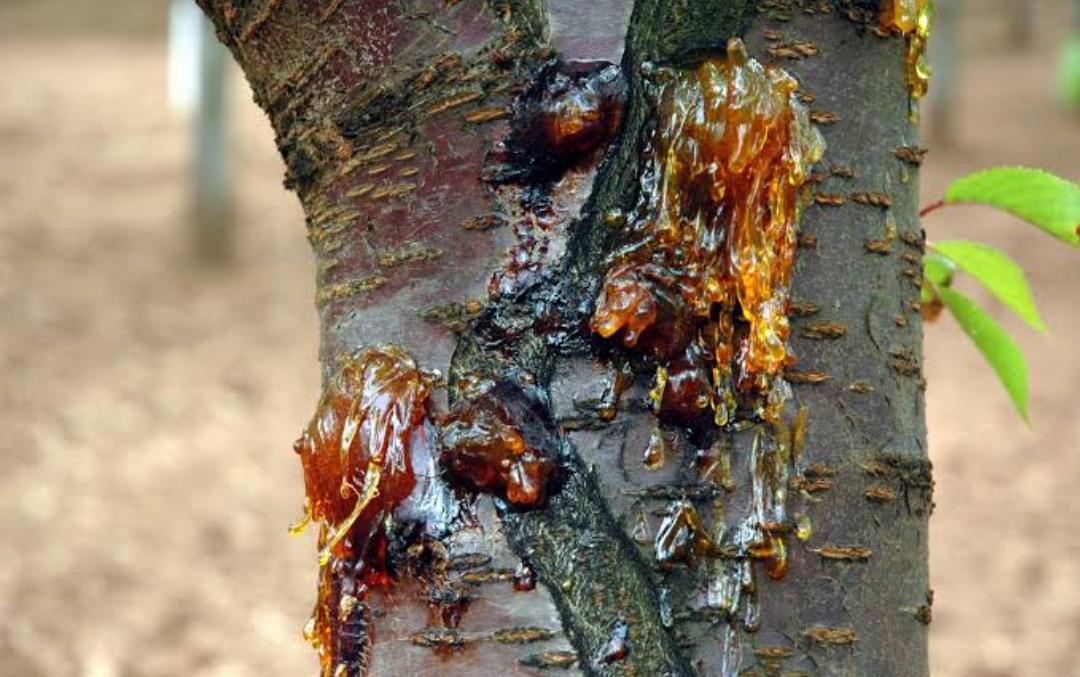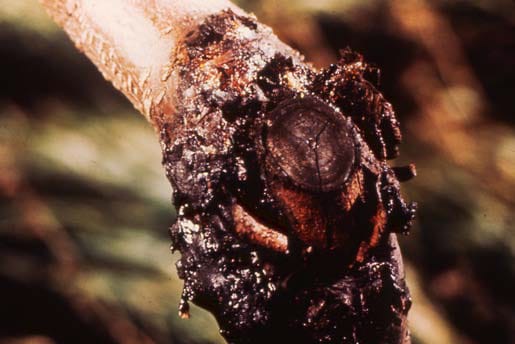Peach Plant
Peach trees, with heights of 15-25 feet in Zones 5-8, prefer well-drained soil and full sun for moderate growth. Known for their sweet and edible fruits, peaches are a favorite in orchards.
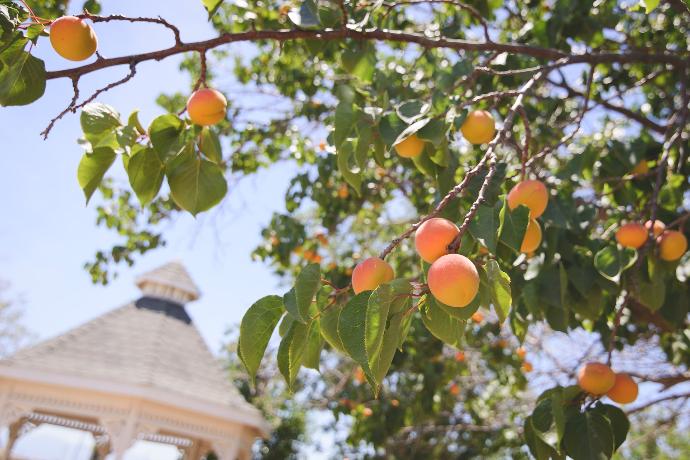
Habit
Tree
Height
3-5 m
Growth
Moderate
Soil
Well-drained, loamy
Shade
Full Sun
Moisture
Moderate
Edible
Yes
Medicinal
Yes
Origin
China, Persia
Climatic Condition
Temperate
Temperature (°)
18-24°C
Humidity (%)
50-70%
Potting media
Loamy, peat
Fertilizers
Balanced NPK (10-10-10)
Watering
Regular, moderate
Plant Weight
2-3 kg
Flowering Time
Spring, Summer
Soil Ph level
6.0 - 7.0
Water Ph level
6.5 - 7.0
Soil EC
1-2 dS/m
Yield Per Plant
20 - 30 kgs/plant
NPK ratio
10:10:10
life Span
Perennial
Health Benefits
Rich in vitamins, antioxidants, supports skin health
Suggested Grow Media or Potting Mix ?
50% loamy soil, 30% compost, 20% sand
Suggested Fertigation/Fertilizers
Fertilize every 6 weeks with a balanced, slow-release fertilizer.
Common Diseases and Remedies
Crown gall , bacterial canker
infected leaves pucker , thicken , curl and often turn red. Infected leaves eventually turn yellow and drop from the tree.
prune the infected areas.
HEALTH BENEFITS
· Rich in vitamins A and C, promoting skin and eye health.
· Contains fiber, aiding digestion and gut health.
· High in antioxidants that help reduce inflammation.
· Supports heart health by lowering cholesterol levels.
What Is An Peach Tree?
Peach (Prunus persica) is a deciduous tree that was first domesticated and cultivated in the Zhejiang Province of eastern China. Mostly peaches, others (shiny-skinned, hairless variety) produce succulents with many characteristics called nectarines.

What Are The Different Types Of Peach Plants?
1. Nectarine
Nectarine is a genetic variation of the peach and has no fuzz. They are yellow-green peaches known for their sweetness and smooth skin.
2. Clingstone
Clingstone Peach, as the name suggests, has pulp stuck to the hole (commonly known as the hole). They have a soft, sweet, slightly tart flavour and are one of the tastiest peaches you can find.
3. Cresthaven
The Cresthaven peach is a sticky peach popular in the southern United States. Their flesh is yellow and tastes sweet and juicy. The seedless variety of Cresthaven peaches is especially prized for its sweet content.
4. Elberta Peaches
Elberta peaches are large and round, with yellow to orange-red skin and juicy, yellow flesh. They have a sweet taste with a touch of sourness. Elberta peaches are found in many southern states, including Georgia, South Carolina, Alabama, Louisiana and Florida. The growing season begins in mid-May and lasts until August.
5. Babcock Peach
Babcock peach is a variety of peach found in the United States. They are characterized by the sweet taste, bright yellow-orange skin and fuzzy white hair that is characteristic of most peaches.
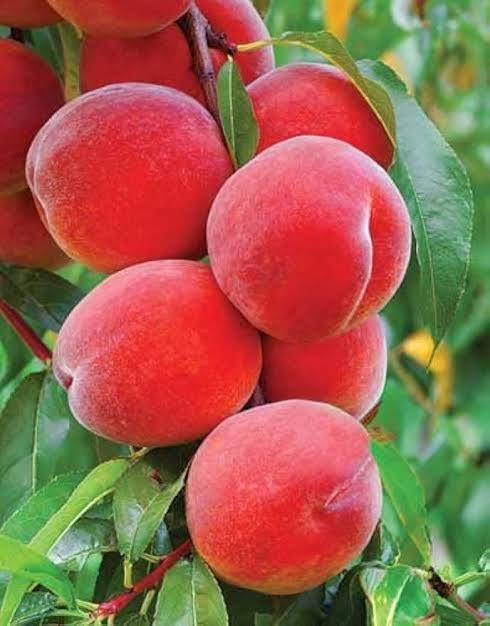
How to care for Peach Plants ?
Water every 5 days in spring, more frequently in hot weather. Keep the plant in full sunlight for at least six hours per day. Apply liquid fertilizer to the fruit as directed on the label. As winter approaches, reduce watering and fertilization in late August or early September.
1. Location
There are many types of peaches. When planning to plant peach trees indoors, choose dwarf varieties because they can vary in size (6 feet and under) depending on the size of the container. Other outdoor plants.
2. Sunshine
Peach trees thrive when grown in full sun with well-drained, fertile soil. "Full sun" means at least 6 to 8 hours of sunlight per day during the growing season. Light is important for fruit production and quality and also helps prevent fungal problems from occurring.
3. Soils
Peach likes slightly acidic soil (pH 6.0-6.8) and thrives in light loamy, well-drained soil. It is important not to plant peaches in low-lying areas with ponds, as this can cause problems such as root rot, which can lead to the death of the peaches.
4. Hydration
To prevent the tree from dying, it is necessary to water it twice a week in light soil and once a week in clay soil. Make sure you penetrate deeply into the entire root system, this should take about 10-20 minutes. For good growth and yield, peach trees need at least 1 inch of water per week.
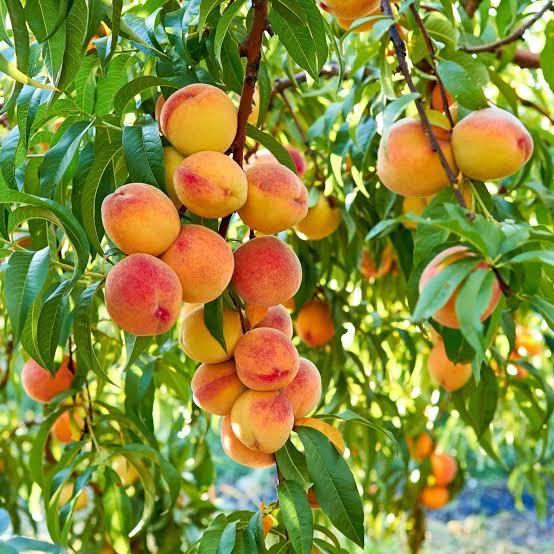
5. Nourishment
The main nutrients needs are nitrogen and potassium, but other nutrients also need to be provided. Adjust the application of nitrogen, phosphorus and potassium content
6. Issues
Peach and nectarine diseases include peach leaf curl, brown rot, perennial canker, and peach scab. Weather greatly affects the occurrence and severity of plant diseases.
What are the Benefits of Peach Plants ?
Like most fruits, peaches provide beneficial properties that help prevent various types of cancer. Peach peel and skin, in particular, are rich in carotenoids and caffeic acid; are two antioxidants that have been found to have anti-inflammatory properties.

FAQs About Growing Peach Plants
1. How to Save a Peach Tree ?
Treatment: Remove affected fruit and fallen mummies from the tree. Prune peach trees during the winter to remove rot spots and ensure adequate ventilation. Use antibiotics such as propiconazole or captan; Make sure they are safe for peach trees.
2. What are Peach Tree Benefits ?
It may protect your skin , Additionally, test-tube and animal studies suggest that using peach blossoms or peach blossoms directly on the skin may help protect against UV damage , Peach blossom extract has also been shown to slow skin cancer in mice
3. Can I grow a peach tree at home ?
When you need to take advantage of sunlight (it is free and excellent for plants), in some cases the indoor light is enough for the peach tree to grow well. A bright window can cut your growing needs in half, but you'll still need a window if you want to grow lots of peaches.
4. What is the best pot for growing peaches ?
The best pot for growing peaches: Ceramic Self-Watering Pot . Plants grow in normal water, but if they become waterlogged they will suffer from impoverishment.
5. Where can I buy peach trees ?
Any organization or nursery.
